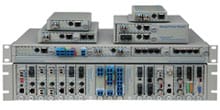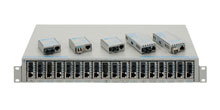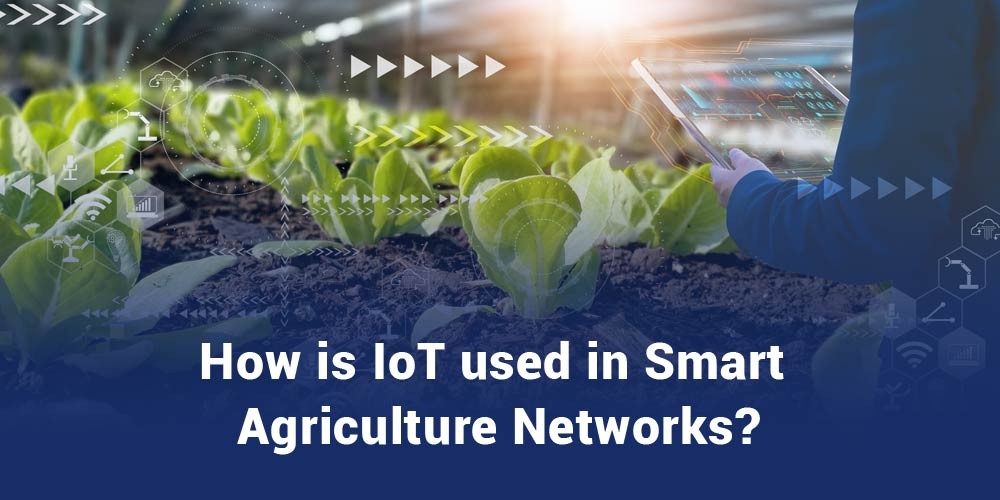- Products
- PoE Media Converters and Switches
- Ethernet & PoE Switches Product Selector
- Multi-Gigabit Ethernet and PoE Switches
- PoE PSE Commercial Switches
- PoE PSE Industrial Fiber Switches
- PoE Industrial Copper Extenders
- PoE Powered Media Converters
- PoE PSE Media Converters
- PoE Extenders & Injectors Product Selector
- Pluggable Transceivers Product Selector
- Single Pair PoE Products
- Product Lines

- iConverter Managed Multi-service Platform
- Copper to Fiber Media Converters
- Ethernet Media Converters
- 10 Gigabit Copper-to-Fiber
- 10/100/1000 Copper to 10 Gigabit Fiber
- 10/100/1000 Copper-to-Fiber with Integrated Management
- 10/100/1000 Industrial Copper-to-Fiber with Integrated Management
- 10/100/1000 Copper-to-Fiber with VLAN
- 10/100/1000 Dual Media Converter with VLAN
- Gigabit Copper-to-Fiber
- 10/100 Copper-to-Fiber with Integrated Management
- 10/100 Industrial Copper-to-Fiber with Integrated Management
- 10/100 Copper-to-Fiber with VLAN
- 10/100 Copper-to-Fiber
- Fast Ethernet Copper-to-Fiber
- Fast Ethernet Redundant Links
- 10Mbps Copper-to-Fiber
- 10Mbps Copper to Coax
- TDM Media Converters
- Serial Media Converters
- Ethernet Media Converters
- Fiber to Fiber Media Converters
- 10 Gigabit Fiber-to-Fiber Converter and Transponder
- 10 Gigabit Industrial Converter and Transponder
- SFP-to-SFP Fiber Converter and Transponder
- SFP-to-SFP Industrial Fiber Converter and Transponder
- Gigabit Fiber to-Fiber with 3 Rs
- 100/1000 Fiber-to-Fiber with 3 Rs
- Gigabit Fiber-to-Fiber
- Fast Ethernet Fiber-to-Fiber with 3 Rs
- Fast Ethernet Fiber-to-Fiber
- OC-3/STM-1 Fiber-to-Fiber
- OC-12/STM-4 Fiber-to-Fiber
- Carrier Ethernet Network Interface Devices
- CE 2.0 - 10G Demarcation NID
- CE 2.0 - 10/100/1000 Mult-port NID
- CE 2.0 - 10/100/1000 Mult-port NID with PoE
- CE 2.0 - 10/100/1000 8-Port NID
- CE 1.0 Service OAM - 10/100/1000 NID
- CE 1.0 Link OAM - 10/100/1000 Copper-to-Fiber NID
- CE 1.0 Link OAM - 10/100 Copper-to-Fiber NID
- CE 1.0 Link OAM - Gigabit Fiber-to-Fiber NID
- CE 1.0 Link OAM - Fast Ethernet Fiber-to-Fiber NID
- CWDM Multiplexers
- T1/E1 Multiplexers
- Ethernet Switch Modules
- Management System
- Chassis Options

- 1-Module Industrial Chassis

- RuggedNet Industrial Switches and Extenders
- Industrial PoE PSE Fiber Switches
- Multi-Gigabit Managed Industrial PoE+/BT Switches
- Multi-Gigabit Unmanaged Industrial PoE+/BT Switches
- 10G Managed 802.3bt PoE Switches
- 10G Unmanaged 802.3bt PoE Switches
- 10G Managed PoE+ Switches
- 10G Unmanaged PoE+ Switches
- 1G Managed PoE+ Switches
- 1G Unmanaged PoE+ Switches
- 1G Unmanaged 802.3bt PoE Switches
- 1G Managed 802.3bt PoE Switches
- Industrial SPE Switches
- Industrial Ethernet Switches
- Industrial PoE Copper Extenders
- Industrial Power Supplies

- OmniConverter Media Converter, Switches and Extenders
- PoE PSE Media Converters
- 10G Multi-Gigabit / Multi-Rate PoE Media Converter
- 10G Multi-Gigabit / Multi-Rate Media Converter
- 10/100 Multi-port PoE+ Media Converter
- 10/100 PoE+ Media Converter
- 10/100/1000 Multi-Port PoE+ Media Converter
- Industrial 10/100/1000 Multi-Port PoE+ Media Converter
- 10/100/1000 PoE+ Media Converter
- 10/100/1000 PoE++ 60W-100W Media Converter
- Industrial 10/100 Multi-port PoE+ Media Converter
- 1U Rack-Mount Shelf
- PoE PSE Compact Switches
- Multi-Gigabit Managed PoE+/BT Switches
- Multi-Gigabit Unmanaged PoE+/BT Switches
- 10G Managed 802.3bt PoE Switches
- 10G Unmanaged 802.3bt PoE Switches
- 10G Managed PoE+ Switches
- 10G Unmanaged PoE+ Switches
- 1G Managed PoE+ Switches
- 1G Unmanaged PoE+ Switches
- 1G Managed 802.3bt PoE Switches
- 1G Unmanaged 802.3bt PoE Switches
- Ethernet Switches
- Single Pair Ethernet (SPE)
- PoE Copper Extenders
- PoE Injectors

- miConverter Unmanaged Miniature Media Converters
- 10/100/1000 Copper-to-Fiber
- Industrial 10/100/1000 Copper-to-Fiber
- 10/100/1000 Ultra-Compact Copper-to-Fiber
- Gigabit Copper-to-Fiber
- 10/100/1000 Copper-to-Fiber PoE Powered
- 10/100 Copper-to-Fiber
- 10/100 Ultra-Compact Copper-to-Fiber
- 10/100 Copper-to-Fiber PoE Powered
- 18-Module Chassis
- Industrial 10/100 Copper-to-Fiber PoE Powered

- FlexSwitch Compact Switches
- Solutions
- Company
- Support
- How to Buy
IoT in Smart Agriculture Networks

In recent years, the agricultural landscape has undergone a transformative change with the integration of the Internet of Things (IoT) technology. Let's delve into the fascinating world of IoT and explore how it is revolutionizing smart agriculture networks.
What is IoT, and How Does it Fit into Agriculture?
The Internet of Things, or IoT, refers to the network of interconnected devices and sensors that collect and exchange data over the Internet. In the context of agriculture, IoT involves the integration of these devices and sensors into farming operations, creating a smart agriculture network.
IoT devices in agriculture include soil moisture sensors, weather stations, GPS trackers, and even drones. These devices provide real-time data on various aspects of farming, enabling farmers to make informed decisions.
Applications of IoT in Agriculture Networks
IoT enables the connectivity and integration of various devices and sensors throughout the agricultural ecosystem, allowing farmers to remotely monitor and manage their operations. Here's how IoT is used in smart agriculture networks:
Sensing and Monitoring:
IoT devices, such as sensors and actuators, are deployed in the field to collect data on various environmental factors, including soil moisture, temperature, humidity, light levels, and weather conditions. These sensors provide real-time information about the crops, allowing farmers to make data-driven decisions and optimize irrigation, fertilization, and pest control processes.
Precision Farming:
IoT enables precision agriculture techniques by providing accurate and localized data on crop health and growth. Farmers can use this information to implement site-specific strategies, such as targeted pesticide application, optimized planting patterns, and tailored irrigation schedules, thereby reducing costs and minimizing environmental impact.
Livestock Monitoring:
The behavior and health of livestock can be monitored using IoT devices. For example, wearable sensors can track the location, activity levels, and vital signs of animals. This data helps farmers detect signs of illness, identify optimal breeding periods, and improve overall animal welfare.
Automated Systems:
IoT facilitates automation in agriculture, where connected devices can control and manage various processes. For instance, IoT-enabled irrigation systems can adjust water supply based on real-time data, ensuring efficient water usage. Automated feeding systems can deliver the right amount of feed to livestock based on their needs, reducing waste and optimizing nutrition.
IoT Network Hardware in Smart Agriculture Networks
Now, let's discuss the specific IoT network hardware used in smart agriculture networks, including the role of PoE switches and media converters:
IoT Sensors and Devices:
These include various sensors, actuators, and IoT-enabled devices deployed throughout the agricultural environment. Examples include soil moisture sensors, weather stations, livestock trackers, and smart irrigation controllers.
Gateways:
IoT gateways act as intermediaries between the IoT devices/sensors and the cloud or central server. They aggregate the data from multiple devices and transmit it to the cloud for analysis and processing. Gateways often support wireless protocols like Wi-Fi, Zigbee, or LoRaWAN to communicate with IoT devices.
PoE (Power over Ethernet) Switches:
PoE switches play a crucial role in providing both data connectivity and power to IoT devices. They eliminate the need for separate power cables by delivering power over the Ethernet infrastructure. PoE switches are commonly used when deploying IoT devices in areas with limited power sources or for ease of installation.
Media Converters:
Media converters are devices used to convert signals between different types of media or network interfaces. In the context of smart agriculture networks, media converters may be used to connect IoT devices or gateways using different communication protocols or physical interfaces, allowing for seamless integration within the network.
Conclusion
IoT has revolutionized agriculture, creating smart farming networks that enhance productivity, sustainability, and profitability. The seamless integration of sensors, data analysis, and automation has paved the way for a new era in agriculture. PoE switches streamline the setup of IoT devices by integrating both power and data connections. On the other hand, media converters play a crucial role in connecting various network interfaces, ensuring smooth communication between devices and gateways.
If you have any future questions, contact Omnitron Systems. We are available 24/7 to answer your questions. Call us now!









